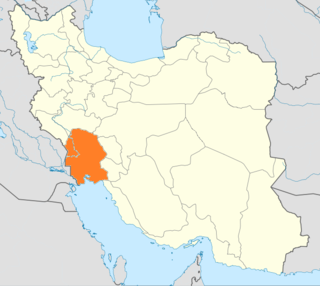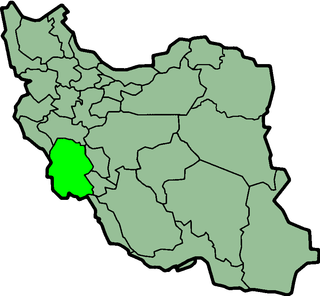 W
WThe 1979 Khuzestan uprising was one of the nationwide uprisings in Iran, which erupted in the aftermath of the Iranian Revolution. The unrest was fed by Arab demands for autonomy. The uprising was effectively quelled by Iranian security forces, resulting in more than a hundred people on both sides killed.
 W
WOn 22 September 2018, a military parade was attacked by armed gunmen in the southwestern Iranian city of Ahvaz. The shooters killed 25 people, including soldiers of the Islamic Revolutionary Guard Corps (IRGC) and civilian bystanders. It was the deadliest terrorist attack in Iran since the Chabahar suicide bombing in December 2010.
 W
W2005 Ahvaz unrest or 15 April Ahvaz Protests were violent riots, initiated by Iranian Arabs in the city of Ahvaz in southwestern Iranian province of Khuzestan. The unrest erupted on 15 April 2005, and lasted for 4 days. Initially, the Iranian Interior Ministry stated that only one person had been killed, however an official at a hospital in Ahvaz said that there were between 15 and 20 mortal casualties. Government officials blamed the unrest on Britain, whose troops based just across the border in southern Iraq. Following the unrest, several bombings were carried out in Ahvaz, killing 28 people. In 2006, Iran executed five Arab separatists, convicted of carrying out the bombings in 2005.
 W
WTemplate:Arab–Iranian conflict
 W
WThe Arab Struggle Movement for the Liberation of Ahwaz is an Arab nationalist insurgent group that advocates for a separate Arab state in Khuzestan Province from Iran. It is classified as a terrorist group by the Iranian government.
 W
WThe Democratic Revolutionary Front for the Liberation of Arabistan was an Iranian Arab militant group founded in 1979, most famous for the Iranian Embassy siege of 1980 in London, United Kingdom. It was led by Oan Ali Mohammed, who was killed during the siege by SAS troops.
 W
WThe Iranian Embassy siege took place from 30 April to 5 May 1980, after a group of six armed men stormed the Iranian embassy on Prince's Gate in South Kensington, London. The gunmen, Iranian Arabs campaigning for sovereignty of Khuzestan Province, took 26 people hostage, including embassy staff, several visitors, and a police officer who had been guarding the embassy. They demanded the release of prisoners in Khuzestan and their own safe passage out of the United Kingdom. The British government quickly decided that safe passage would not be granted and a siege ensued. Subsequently, police negotiators secured the release of five hostages in exchange for minor concessions, such as the broadcasting of the hostage-takers' demands on British television.
 W
WThe National Liberation Movement of Ahwaz is an Arab nationalist and separatist organisation whose goal is to establish an independent state called Ahwaz in Iran.
 W
WThis article focuses on the politics of Khuzestan Province, a petroleum-rich and ethnically diverse province of southwestern Iran. Some of the major Iranian oilfields like Ahvaz Field, Marun, Aghajari, Karanj, Shadegan and Mansouri are located in Khuzestan Province territory.
 W
WSheikh Khazal rebellion refers to the 1924 Arab separatist uprising by Khazal al-Kabi, the Sheikh of Mohammerah, in Iranian Khuzestan. The rebellion was quickly and efficiently suppressed by Reza Pahlavi with minimal casualties, subduing the Bakhtiari tribes allied with Sheikh Khazal and resulting in his surrender.